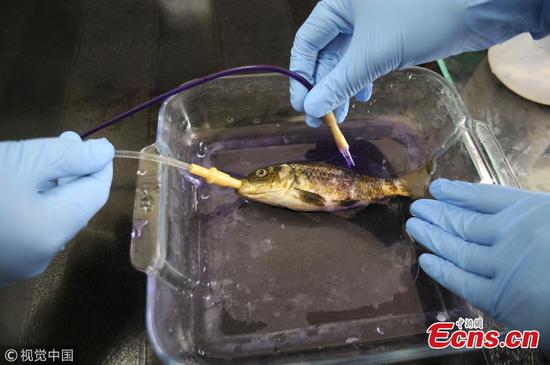Scientists have for the first time found a specific place in the human genome that raises a man's risk of erectile dysfunction, according to a study published on Monday in the journal Proceedings of the National Academy of Sciences.
The discovery is a significant progress in the understanding of the genetics underlying erectile dysfunction (ED), the inability to obtain and maintain an erection sufficient for sexual activity, which is a common condition of men of primarily in middle and older ages.
The disease is linked to many causes, such as neurological, hormonal and vascular factors. Many men don't respond to therapies based on these factors however.
Genetics has been suspected to be a factor in about one-third of ED cases, but researchers have failed to make any link with any specific genomic locations until now.
The new study found that variations in a genetic locus near the SIM1 gene are significantly associated with an increased risk of erectile dysfunction.
The researchers ruled out that the risk was due to other known risk factors for erectile dysfunction, such as body mass index.
The study also demonstrated a biological role for the genetic location in regulating sexual function, strongly suggesting that these variations can cause erectile dysfunction.
Identifying the first genetic risk factor for erectile dysfunction is an exciting discovery because it opens the door for investigations into new, genetic-based therapies, said the study's lead author Eric Jorgenson, research scientist at Kaiser Permanente Northern California's Division of Research.
The study found that variations in the SIM1 locus were associated with a 26-percent increased risk of erectile dysfunction. This risk was independent of known erectile dysfunction risk factors.
The SIM1 gene is known to be part of a signaling pathway that plays a central role in body weight regulation and sexual function.
The erectile dysfunction locus is located near, but not in, the SIM1 gene, but the researchers at the University of California, San Francisco, were able to show that the implicated location physically interacts with the promoter of the SIM1 gene, and that variants in this location alter the function of a master gene regulator, called an enhancer.
Jorgenson likened the gene a light bulb, the promoter a light switch and an enhancer a fuse box.
Because the erectile dysfunction risk locus showed enhancer activity and interacted with the SIM1 promoter, the erectile dysfunction risk locus likely influences the expression of the SIM1 gene, turning it on and off when needed, according to the study.
The study revealed the potential of SIM1 as a target for the development of new treatments for erectile dysfunction.
"Hopefully, this will translate into better treatments and, importantly, prevention approaches for the men and their partners who often suffer silently with this condition," said the co-author Hunter Wessells, chair of urology at the University of Washington School of Medicine.


















































